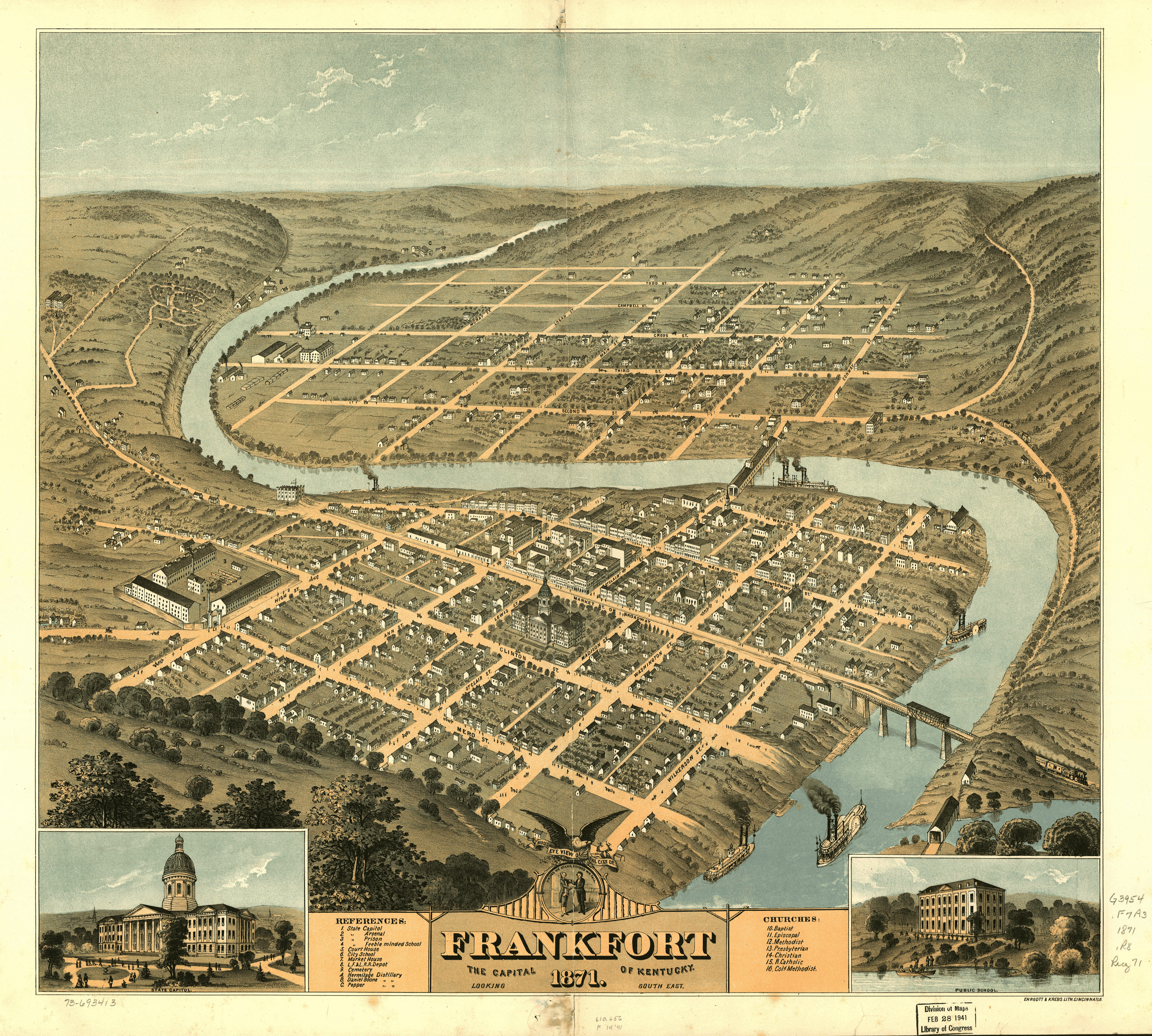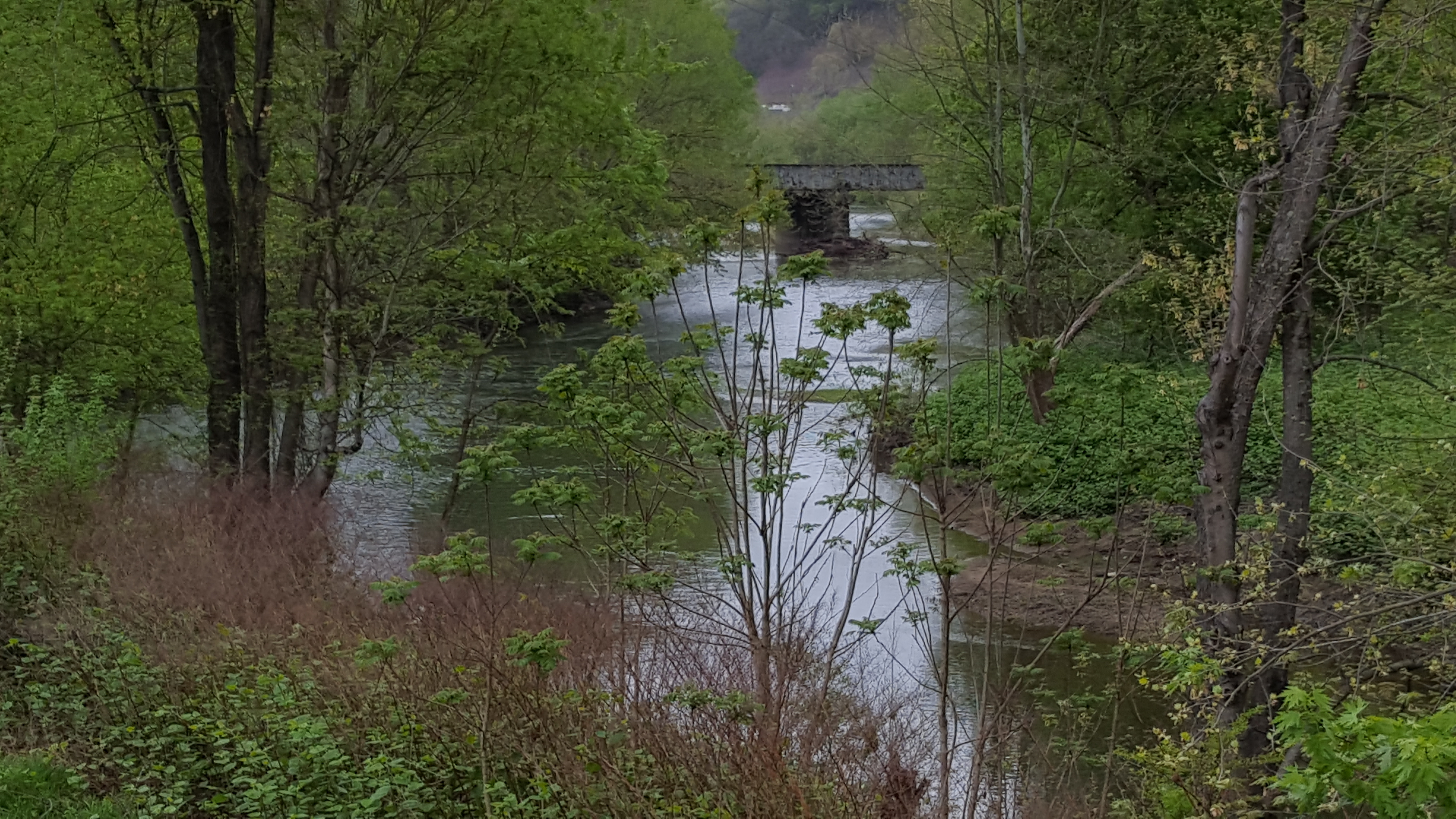|
Kentucky Route 164
Kentucky Route 164 (KY 164) is a state highway in western Kentucky. Route description KY 164 begins its run on Linton Road from U.S. Route 68 (US 68, co-signed with KY 80) and Old Canton Road Connector in the western Trigg County community of Canton. It parallels the eastern shores of Lake Barkley while traversing the small communities of Donaldson and Linton. It turns eastward to cross KY 139 and becomes Roaring Springs Road afterwards. After traversing the town of Roaring Springs, and also paralleling the northwestern boundary of the Fort Campbell Military Reservation, KY 164 turns northeastward before entering Christian County. KY 164, locally known as Newstead Road, ends at the junction with KY 272 west of Hopkinsville. History KY 164 originally ran from the Tennessee State line northeast of the now-extinct town of Model, and entered the community of Linton via a ferry crossing of the Cumberland River The Cumberland Rive ... [...More Info...] [...Related Items...] OR: [Wikipedia] [Google] [Baidu] |
Canton, Kentucky
Canton is an unincorporated community in Trigg County, Kentucky, United States. Canton is located on the eastern shore of Lake Barkley along U.S. Route 68 and Kentucky Route 80 Kentucky Route 80 (KY 80) is a state highway in the southern part of the U.S. state of Kentucky. The route originates on the state's western border at Columbus in Hickman County and stretches across the southern portion of the state, ... west-southwest of Cadiz. References External linksHistory of Canton Unincorporated communities in Trigg County, Kentucky Unincorporated communities in Kentucky {{TriggCountyKY-geo-stub ... [...More Info...] [...Related Items...] OR: [Wikipedia] [Google] [Baidu] |
Roaring Springs, Kentucky
A roar is a type of animal vocalization that is deep and resonating. Many mammals have evolved to produce roars and other roar-like vocals for purposes such as long-distance communication and intimidation. These include various species of big cats, bears, pinnipeds, bovids, deer, elephants and simians. The anatomical basis for the ability to roar often involves modifications to the larynx and hyoid bone and enlarged internal air spaces for low-frequency vocal resonation. While roaring, animals may stretch out their necks and elevate their heads to increase the space for resonance. Definition The definition of "roar" has varied between species. However Weissengruber et al. (2002) have given a more general description of roars as consisting of both a low pitch and low formant. They have used the roars of lions and red deer as quintessential examples of the sound. Other researchers have mentioned similar "roar-like" vocalizations in which either the pitch or format is still ... [...More Info...] [...Related Items...] OR: [Wikipedia] [Google] [Baidu] |
State Highways In Kentucky
State highways in Kentucky are maintained by the Kentucky Transportation Cabinet, which classifies routes as either primary or secondary. Some routes, such as Kentucky Route 80, are both primary and secondary, with only a segment of the route listed as part of the primary system. Despite the name, there is no difference in signage between primary and secondary routes. All of the Interstates and parkways are also primary, but only parts of the U.S. Highways in Kentucky are (though every mainline U.S. Highway is at least partially primary). Due to the large size of the state highway system, only segments of routes that are part of the primary system are listed below. Primary state highways 1-999 1000-1999 2000-2999 3000-5999 6000-6999 References *Kentucky Transportation CabinetState Primary Road System Listings accessed November 2014 {{Roads in Kentucky ... [...More Info...] [...Related Items...] OR: [Wikipedia] [Google] [Baidu] |
Frankfort, Kentucky
Frankfort is the capital city of the Commonwealth of Kentucky, United States, and the seat of Franklin County. It is a home rule-class city; the population was 28,602 at the 2020 census. Located along the Kentucky River, Frankfort is the principal city of the Frankfort, Kentucky Micropolitan Statistical Area, which includes all of Franklin and Anderson counties. History Pre-1900 The town of Frankfort likely received its name from an event that took place in the 1780s. Native Americans attacked a group of early European colonists from Bryan Station, who were on their way to make salt at Mann's Lick in Jefferson County. Pioneer Stephen Frank was killed at the Kentucky River and the settlers thereafter called the crossing "Frank's Ford". This name was later elided to Frankfort. In 1786, James Wilkinson purchased a tract of land on the north side of the Kentucky River, which developed as downtown Frankfort. He was an early promoter of Frankfort as the state capital. Wilkinso ... [...More Info...] [...Related Items...] OR: [Wikipedia] [Google] [Baidu] |
Cumberland River
The Cumberland River is a major waterway of the Southern United States. The U.S. Geological Survey. National Hydrography Dataset high-resolution flowline dataThe National Map, accessed June 8, 2011 river drains almost of southern Kentucky and north-central Tennessee. The river flows generally west from a source in the Appalachian Mountains to its confluence with the Ohio River near Paducah, Kentucky, and the mouth of the Tennessee River. Major tributaries include the Obey, Caney Fork, Stones, and Red rivers. Although the Cumberland River basin is predominantly rural, there are also some large cities on the river, including Nashville and Clarksville, both in Tennessee. Also, the river system has been extensively altered for flood control. Major dams impound areas of both the main stem and many of its important tributaries. Geography Its headwaters are three separate forks that begin in Kentucky and converge in Baxter, KY, located in Harlan County. Martin's Fork starts n ... [...More Info...] [...Related Items...] OR: [Wikipedia] [Google] [Baidu] |
Model, Tennessee
Model was an unincorporated community in Stewart County, Tennessee, United States. The community is one of several communities and towns in the general area that has become a part of the Land Between the Lakes National Recreation Area. History The settlement was originally known as Pryor's Creek at its founding in the early half of the 19th century. A post office was established as Bass in July 1846, named after the area's first postmaster, Jethro Bass. It was renamed Great Western in 1854 after a furnace that was established that year, only to be fallen victim of the shut down of the furnace industry in the area due to a panic related to slave insurrection in late 1856. In the 1860s after the American Civil War, the Cincinnati Copperage Company established the area as a real estate operation, or "model town," which is how the community got its final name in 1887. People who came to work for the furnaces in the area relocated to the area, many of whom became farmers, blac ... [...More Info...] [...Related Items...] OR: [Wikipedia] [Google] [Baidu] |
Tennessee
Tennessee ( , ), officially the State of Tennessee, is a landlocked state in the Southeastern region of the United States. Tennessee is the 36th-largest by area and the 15th-most populous of the 50 states. It is bordered by Kentucky to the north, Virginia to the northeast, North Carolina to the east, Georgia, Alabama, and Mississippi to the south, Arkansas to the southwest, and Missouri to the northwest. Tennessee is geographically, culturally, and legally divided into three Grand Divisions of East, Middle, and West Tennessee. Nashville is the state's capital and largest city, and anchors its largest metropolitan area. Other major cities include Memphis, Knoxville, Chattanooga, and Clarksville. Tennessee's population as of the 2020 United States census is approximately 6.9 million. Tennessee is rooted in the Watauga Association, a 1772 frontier pact generally regarded as the first constitutional government west of the Appalachian Mountains. Its name derives from "Tanas ... [...More Info...] [...Related Items...] OR: [Wikipedia] [Google] [Baidu] |
Kentucky Route 272
Kentucky Route 272 (KY 272) is a State highway (US), state highway in the U.S. state of Kentucky. The highway connects rural areas of Trigg County, Kentucky, Trigg and Christian County, Kentucky, Christian counties with Hopkinsville, Kentucky, Hopkinsville. Route description Trigg County KY 272 begins at an Intersection (road), intersection with U.S. Route 68 in Kentucky, US 68/Kentucky Route 80, KY 80 (Canton Road) southwest of Cadiz, Kentucky, Cadiz, within Trigg County, Kentucky, Trigg County. It travels to the east and immediately intersects the northern terminus of Kentucky Route 1062, KY 1062 (Maple Grove Road). It crosses over Caney Creek (Kentucky), Caney Creek and curves to the southeast before curving to the northeast. It intersects the southern terminus of Kentucky Route 1175, KY 1175 (Old Dover Road). The highway intersects Kentucky Route 139, KY 139 (S Road) and then crosses over Burge Creek. It begins curving to the southeast a ... [...More Info...] [...Related Items...] OR: [Wikipedia] [Google] [Baidu] |
Fort Campbell
Fort Campbell is a United States Army installation located astride the Kentucky–Tennessee border between Hopkinsville, Kentucky, Hopkinsville, Kentucky and Clarksville, Tennessee, Clarksville, Tennessee (post address is located in Kentucky). Fort Campbell is home to the 101st Airborne Division (Air Assault), 101st Airborne Division and the 160th Special Operations Aviation Regiment (Airborne), 160th Special Operations Aviation Regiment. The fort is named in honor of Union Army Brigadier General William B. Campbell, William Bowen Campbell, the last Whig Party (United States), Whig Governor of Tennessee. History The site for Mid-Campbell was selected on September 9, 1941, and the Title I Survey was completed November 15, 1941, coincidentally the same time the Imperial Japanese Navy, Japanese Imperial Fleet was leaving Japanese home waters for the attack on Pearl Harbor. Construction of Camp Campbell began on January 12, 1942. Within a year, the reservation designated as Camp Ca ... [...More Info...] [...Related Items...] OR: [Wikipedia] [Google] [Baidu] |
Kentucky Route 139
Kentucky Route 139 (KY 139) is a state highway in Kentucky that runs from Tennessee State Route 120 at the Tennessee state line south of Cadiz to Kentucky Route 120 in rural Crittenden County north of Princeton via Cadiz and Princeton. Route description KY 120 begins at the Tennessee state line just west of the Fort Campbell Military Reservation. Its first city it goes through is Cadiz, where it intersects the concurrent U.S. Route 68 (US 68) and KY 80, as well as US 68's business loop in downtown Cadiz. After entering Caldwell County, it then intersects Interstate 24 (I-24) where north of the ramp is the frontage roads, KY 6059 and KY 6060. South from that, at the point where Trigg County meets with Caldwell and Lyon counties. At Princeton, KY 139 runs concurrently with US 62 and KY 91. KY 91/KY 139 together turns right on the west side of town and then intersects with Interstate 69 (I-69). KY&n ... [...More Info...] [...Related Items...] OR: [Wikipedia] [Google] [Baidu] |
Hopkinsville, Kentucky
Hopkinsville is a home rule-class city in and the county seat of Christian County, Kentucky, United States. The population at the 2010 census was 31,577. History Early years The area of present-day Hopkinsville was initially claimed in 1796 by Bartholomew Wood as part of a grant for his service in the American Revolution. He and his wife Martha Ann moved from Jonesborough, Tennessee, first to a cabin near present-day W. Seventh and Bethel streets; then to a second cabin near present-day 9th and Virginia streets; and finally to a third home near 14th and Campbell. Following the creation of Christian County the same year, the Woods donated of land and a half interest in their Old Rock Spring to form its seat of government in 1797. By 1798, a log courthouse, jail, and "stray pen" had been built; the next year, John Campbell and Samuel Means laid out the streets for "Christian Court House". The community tried to rename itself "Elizabeth" after the Woods' eldest daughter, but a ... [...More Info...] [...Related Items...] OR: [Wikipedia] [Google] [Baidu] |




